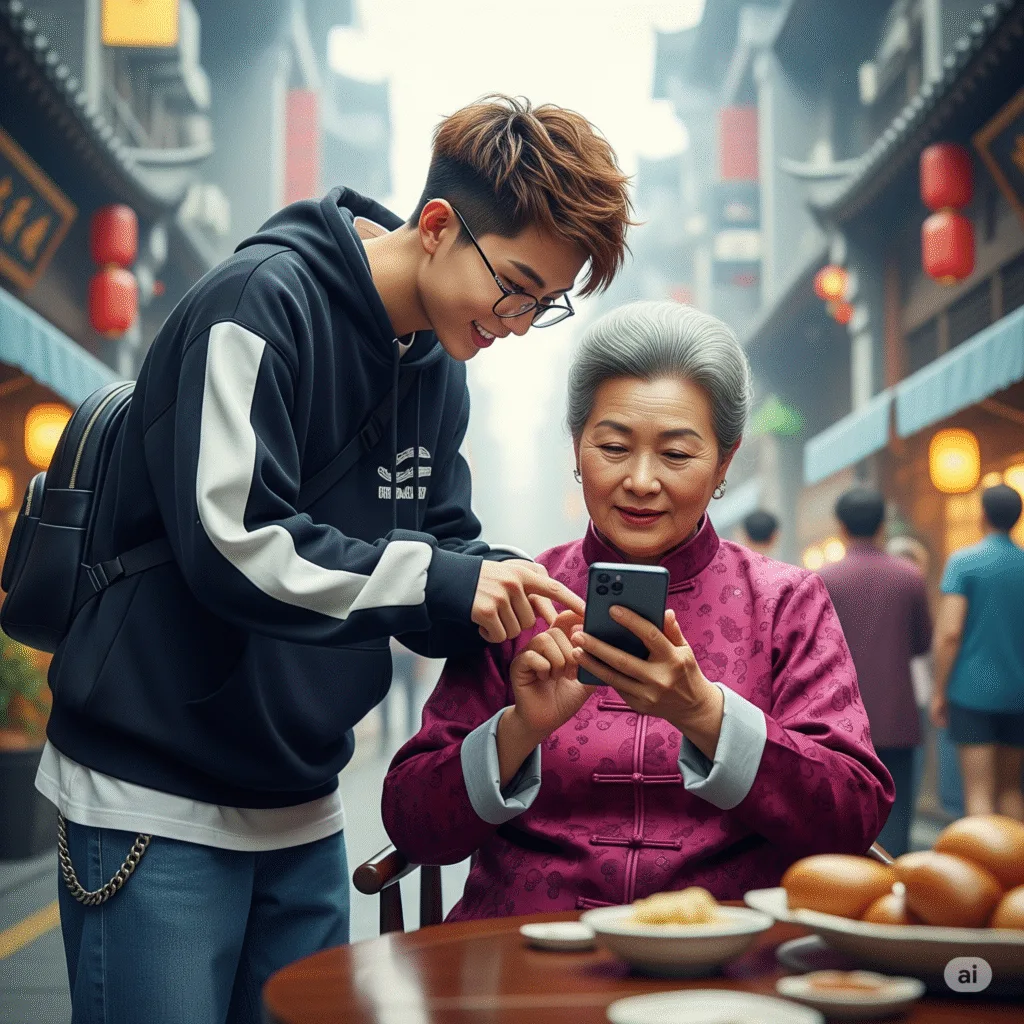By 2030, India will have over 200 million elderly citizens. At the same time, it will be home to the world’s largest youth population. This stark demographic contrast sets the stage for one pressing question: Can India’s younger generation gently guide their elders into the new age, as Chinese youth increasingly do? With changing values, mental health awareness, and digital lifestyles creating generational gaps, the concept of reverse parenting is no longer a novelty—it’s a necessity.
Bridging this divide isn’t about rebellion—it’s about reconnection. As tradition meets transformation, Indian youth may hold the key to guiding their families through a more compassionate, modern lens. The question is, can we do it with respect, not resistance?
Table of Content
- 🧭Parental Authority vs Emotional Collaboration: India vs China’s Evolving Norms
- 🧠Mental Health Conversations: China’s Shift vs India’s Silence
- 📱Digital Literacy and Social Awareness: India’s Dependency vs China’s Digital Dialogue
- 🌏Cultural Flexibility and Generational Transition: Will India Open Up Like China?
- 🧩Final Thoughts: Is India Ready for a Gentle Revolution?

🧭Parental Authority vs Emotional Collaboration: India vs China’s Evolving Norms
Fact: By 2030, India will have over 200 million elderly, and its median age will be 31, indicating a growing generational divide.
Source: Pew Research Center – 2023
China’s changing social fabric allows more room for intergenerational role-reversal. The shrinking family size, education reforms, and psychological support ecosystems have made it easier for youth to be agents of change within their families.
India’s cultural rigidity, however, continues to resist these changes. Reverse parenting may be necessary—especially with mental health, digital awareness, and social progress—but its path is riddled with resistance. Unlike China, India’s elders often see any form of correction or guidance from children as disrespect.
Example:
Chinese parents attending a tech literacy class led by teens is encouraged by local communities. In India, asking parents to attend such sessions could be seen as humiliating, unless positioned as a “blessing in disguise” or a health-related necessity.
🧠Mental Health Conversations: China’s Shift vs India’s Silence
Fact: India accounts for 15% of the global mental health burden, yet 83% of people with mental disorders do not receive treatment.Source: The Lancet Psychiatry
Fact: China has seen a 39% increase in mental health consultations among people aged 50+ from 2019 to 2022.
Source: Nature – Health Video Consumption Study, 2024
Mental health is a key area where reverse parenting shows its strength. Chinese youth, empowered with better access to online resources and awareness, are starting conversations about therapy, emotional boundaries, and work-life balance with their parents.
In India, mental health remains steeped in stigma. Young Indians may be aware of the benefits of therapy, but initiating a conversation about seeing a counselor with their parents is still daunting. Elders often equate therapy with weakness or madness, making it difficult for children to guide them toward healing.
Example:
A Chinese teen might book a therapy session for her mother after a stressful job loss. An Indian youth, even with the same intent, would first battle social perception, family disapproval, and her parent’s resistance to “airing dirty laundry.”
📱Digital Literacy and Social Awareness: India’s Dependency vs China’s Digital Dialogue
Fact: In China, over 70% of seniors aged 60+ use smartphones, mainly with assistance from younger family members.
Source: Statista – China Seniors Smartphone Use
Reverse parenting is highly visible in the digital space. Chinese youth frequently help their elders with online shopping, banking apps, telemedicine, and fraud prevention. But the key difference is educational intent—Chinese children often explain the ‘why’ behind tech tools.
In India, while youth regularly perform digital tasks for their parents (recharging phones, UPI payments, downloading tickets), there is less emphasis on teaching. Many parents are happy to remain passive, delegating tech interactions to their children, reinforcing dependency.
Example:
In Beijing, a college student sets up her father’s fitness tracker and educates him about data privacy. In Mumbai, a young professional simply orders groceries for her mother without explaining the app, perpetuating the tech gap.
🌏 4. Cultural Flexibility and Generational Transition: Will India Open Up Like China?
Fact: By 2030, India will have over 200 million elderly, and its median age will be 31, indicating a growing generational divide.
Source: Pew Research Center – 2023
China’s changing social fabric allows more room for intergenerational role-reversal. The shrinking family size, education reforms, and psychological support ecosystems have made it easier for youth to be agents of change within their families.
India’s cultural rigidity, however, continues to resist these changes. Reverse parenting may be necessary—especially with mental health, digital awareness, and social progress—but its path is riddled with resistance. Unlike China, India’s elders often see any form of correction or guidance from children as disrespect.
Example:
Chinese parents attending a tech literacy class led by teens is encouraged by local communities. In India, asking parents to attend such sessions could be seen as humiliating, unless positioned as a “blessing in disguise” or a health-related necessity.
🧩 Final Thoughts: Is India Ready for a Gentle Revolution?
Reverse parenting is not about flipping roles entirely—it’s about enabling mutual growth and emotional adaptability between generations. While China’s social environment has supported this shift, India’s strong cultural hierarchies and reverence for parental authority pose unique challenges.
Yet, India is changing. Urbanization, education, and the increasing emotional intelligence of its youth are pushing boundaries. With respectful communication and empathetic approaches, Indian youth can gently introduce reverse parenting in ways that honour tradition while embracing progress.




























Leave a Reply